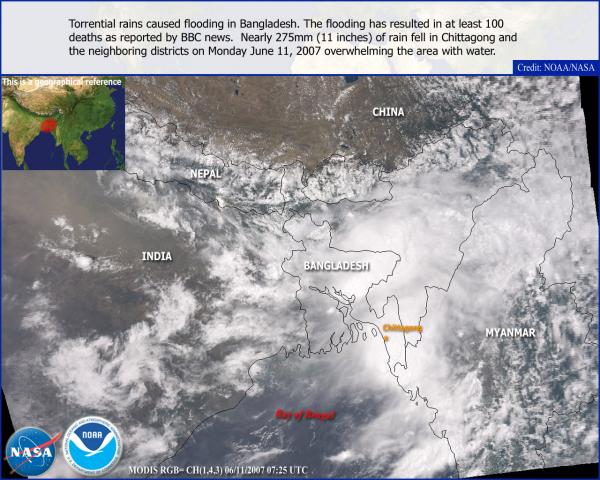
U.S., India Join to Improve Monsoon Forecasts

The United States and India are teaming up to improve India's forecasts of the intense rainy season that strikes every year, the U.S. National Oceanic and Atmospheric Administration (NOAA) announced yesterday (Nov. 11).
To improve monsoon forecasts, President Barack Obama and Indian Prime Minister Manmohan Singh will join forces between NOAA and the Indian Ministry of Earth Sciences. The agreement is part of a series of food security agreements formalized this week during the president's visit.
The word "monsoon" is from the Arabic "mausim," which means season, so to say "monsoon season," as many do, is thought by climatological purists to be redundant.
Monsoons in India typically result in six months of rain beginning in early June. Daytime heating causes the moist air to rise, where it condenses and forms violent thunderstorms, whose winds often fuel sky-darkening dust storms that sweep across the desert and affect large portions of entire countries. Worse, monsoons can spread pollutants across continents.
Predicting when the monsoon will begin, how strong it will be or when it will end is difficult. This information could help plan for seasonal crops and gauge water supplies.
In addition to the regional impacts, the Indian Ocean-Asia monsoon system represents one of the largest weather and climate features in the world. The system transports energy between the northern and southern hemispheres and affects weather and climate throughout the world.
"The Monsoon Agreement, by striving to improve long-range monsoon prediction, holds great potential to improve the well-being of the people of India, while also benefitting the United States and other nations through improvements in their own seasonal climate forecasts," said Jane Lubchenco of NOAA in a statement. "NOAA looks forward to this new relationship with the Ministry of Earth Sciences for the mutual benefit of our nations."
Sign up for the Live Science daily newsletter now
Get the world’s most fascinating discoveries delivered straight to your inbox.
Under the agreement, the United States will create a monsoon forecast desk and visiting atmospheric scientists from India will share knowledge and skills to improve the long-range forecasts. Visiting scientists will also learn new skills that they can take back home.
The monsoon is one of the least understood weather phenomena in the United States, so the collaboration will also focus improving short-range monsoon forecasts in the U.S. Southwest.











